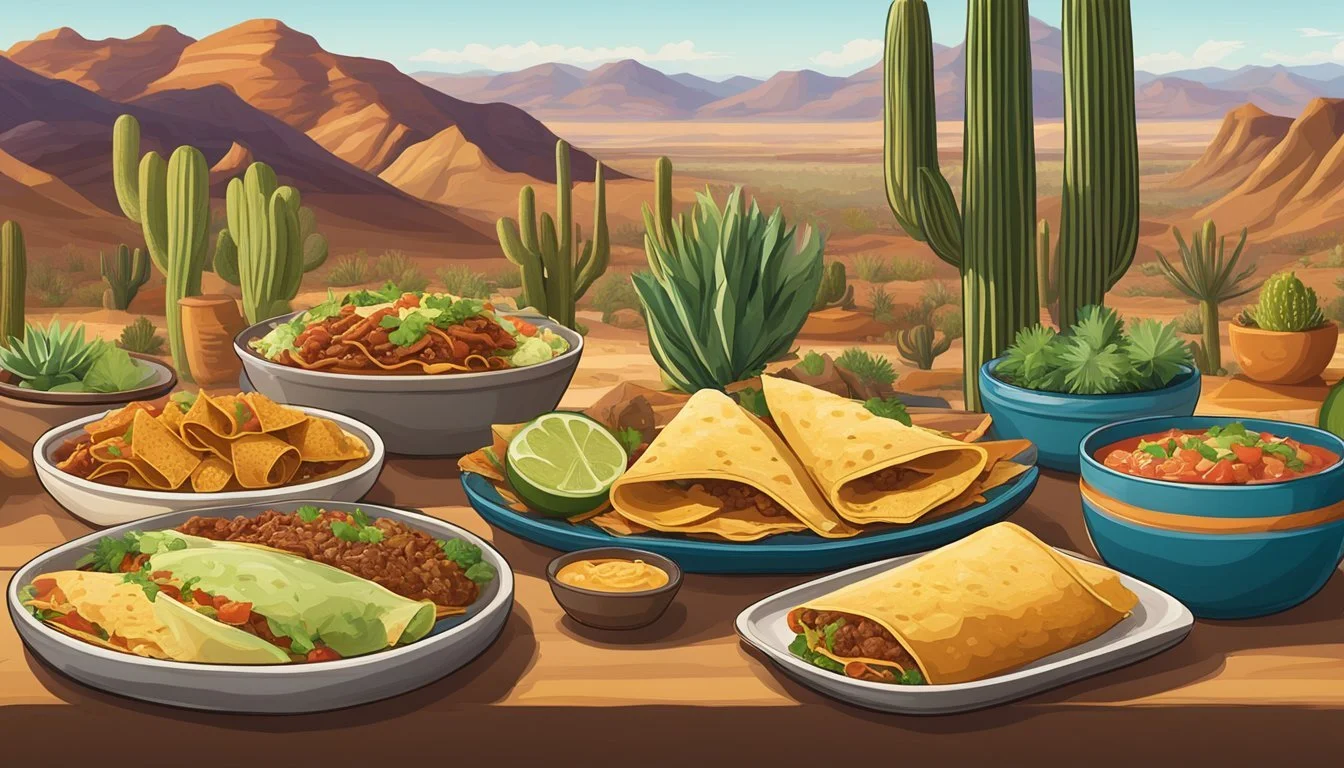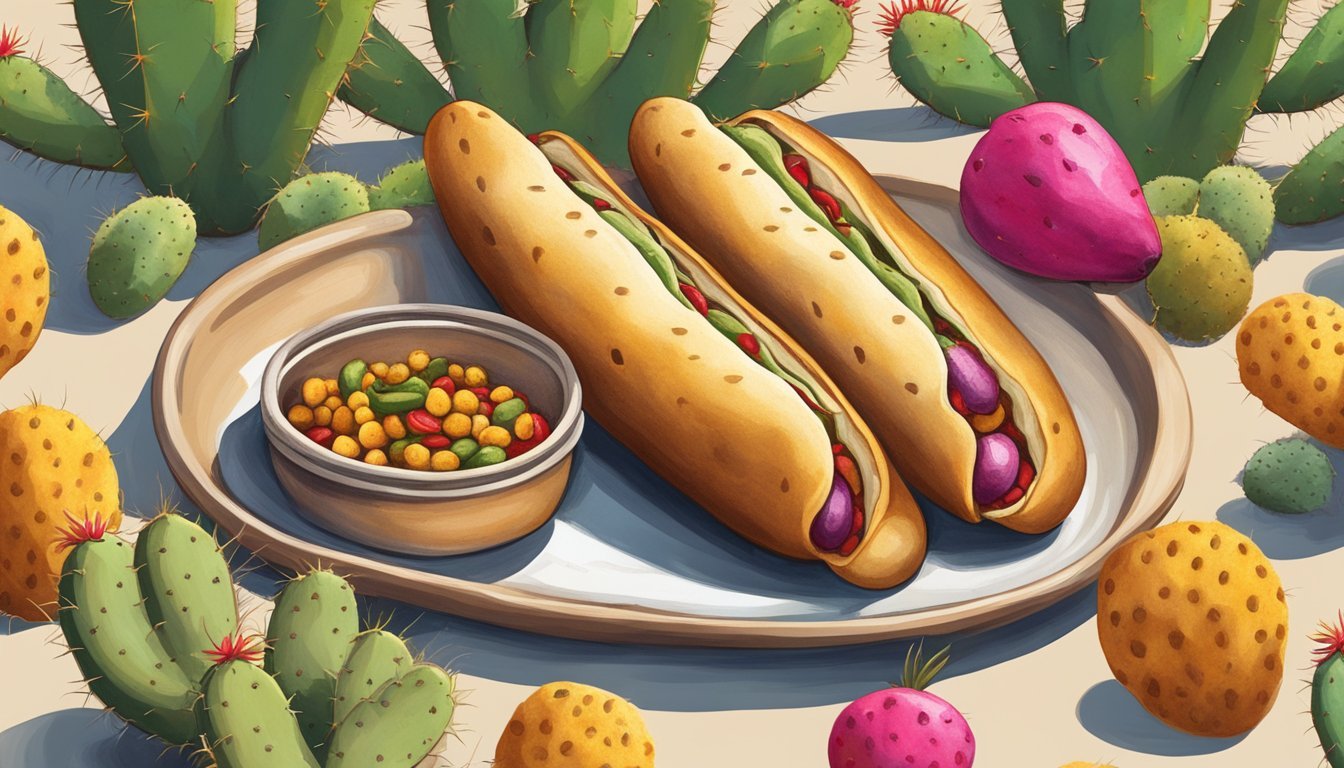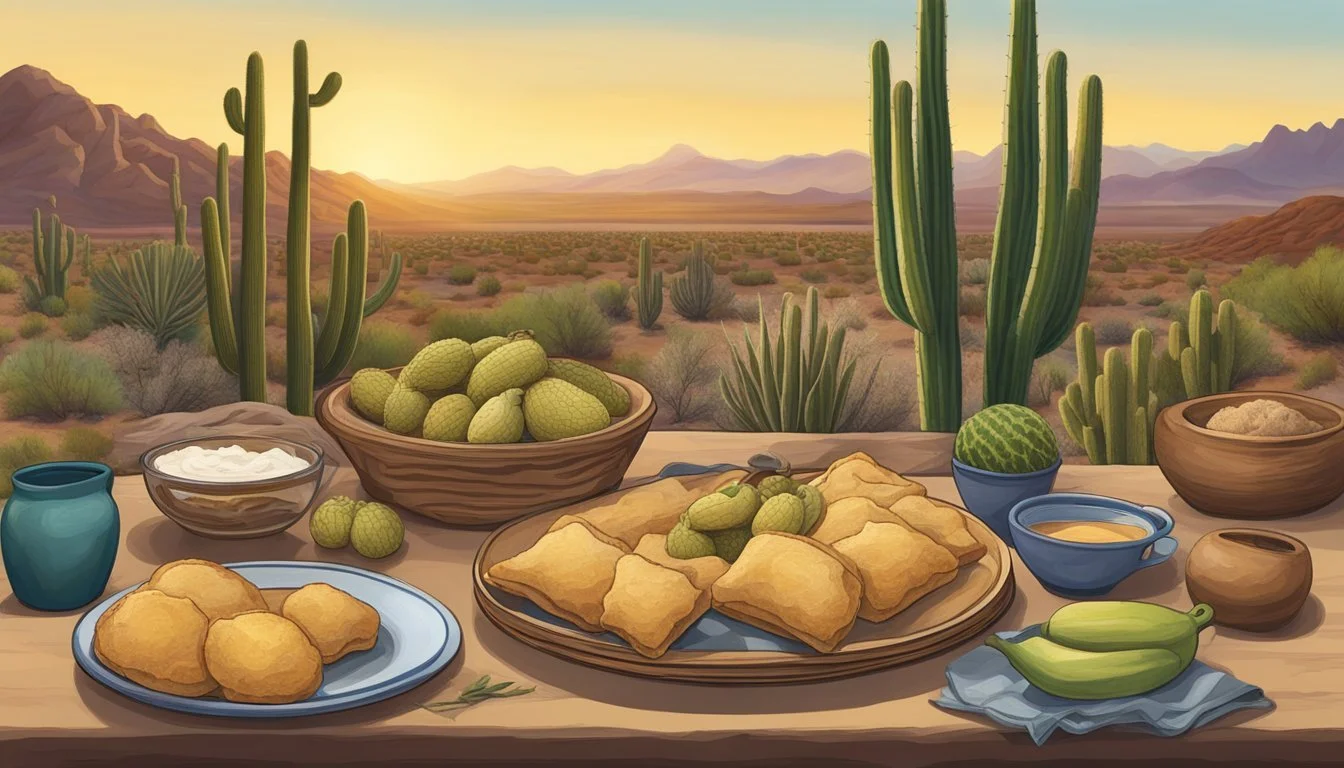What Food is Arizona Known for?
Exploring the State's Iconic Eats
Arizona's culinary scene is a vibrant tapestry that reflects the state's diverse culture and history. Known for its unique Southwestern cuisine, Arizona offers a wide array of foods that are deeply rooted in both Native American and Mexican culinary traditions. Many dishes go beyond mere sustenance, carrying stories and traditions from generation to generation. These foods range from time-honored recipes to modern interpretations that still pay homage to their origins.
One standout is the cheese crisp, a simple yet delicious creation that's reminiscent of a quesadilla but is served open-faced and baked to crispy perfection. The state is also the birthplace of the chimichanga, a deep-fried burrito that is a staple in many Arizona restaurants. Such dishes offer a taste of the local flavor that is both distinct and universally appealing, encapsulating the essence of Arizona's food heritage.
Navajo tacos, another Arizona specialty, replace the traditional taco shell with Native American frybread, topped with various ingredients such as beans, cheese, lettuce, and tomatoes. This dish showcases the influence of indigenous cuisine in Arizona. Burritos, or 'burros' as they're locally known, further enrich the Arizona food experience, offering a portable meal that satisfies at any time of the day. Each of these foods presents an essential part of Arizona's culinary identity, inviting locals and visitors alike to enjoy the flavors that make the state's food scene so memorable.
Iconic Foods of Arizona
Arizona's culinary scene is a reflection of its cultural heritage, showcasing a fusion of Native American, Hispanic, and Southwestern influences. Among the vast array of enticing dishes, there are a few standouts that are quintessentially Arizonan. They attract food lovers with their unique flavors and historical significance in the state.
Sonoran Hot Dogs
The Sonoran Hot Dog is a standout street food, particularly in Tucson. This regional specialty consists of a hot dog wrapped in bacon and typically piled with beans, onions, tomatoes, mayonnaise, mustard, and jalapeño salsa. Often, it's served in a slightly sweet bread known as a bolillo. The combination of smokey bacon and spicy toppings creates a flavor profile that is both bold and satisfying.
Navajo Tacos
Navajo Tacos, also known as Indian tacos, are a nod to Native American culinary traditions. They feature fry bread, which is fluffy and crisp, topped with a variety of ingredients such as seasoned ground beef, lettuce, cheese, and pico de gallo. Diners can often customize their taco with additions like salsa and guacamole to enhance the rich combination of textures and flavors.
Cheese Crisps
Originating in the Phoenix area, Cheese Crisps (how long do cheese crisps last?) are Arizona’s twist on quesadillas. These open-faced tortilla delights are crisped to perfection, smothered with melted cheese, and often served with slices of jalapeño. Simple yet delicious, cheese crisps can be enjoyed as an appetizer or a light meal and provide a satisfying crunch with every bite.
Desert-Inspired Delicacies
Arizona's culinary scene is as bold and inventive as its landscapes, offering a range of desert-inspired delicacies that are not only unique but deeply rooted in the state's rich cultural heritage. These dishes highlight local ingredients like cactus and mesquite, transforming the challenges of the desert environment into a wellspring of gastronomic creativity.
Cactus-Based Dishes
One of the most celebrated examples of desert cuisine is the use of cactus, specifically the Nopal cactus. This edible plant is a staple in many Arizona kitchens, turning up in dishes such as salads, tacos, and even stews. The tender Nopal pads are known for their high fiber content and subtly tart flavor, providing a unique twist to traditional southwestern meals.
Nopalitos con Huevos: A popular breakfast dish featuring scrambled eggs and sautéed Nopal.
Mesquite-Infused Flavors
Mesquite trees are indigenous to the Sonoran Desert and their pods are milled into mesquite flour, which is used to imbue dishes with a distinctive, sweet, nutty flavor. Mesquite flour is a versatile ingredient and a gluten-free alternative to conventional flours, making it ideal for baking or as a flavor enhancer for meats and vegetables.
Mesquite Grilled Steak: Steak graced with the sweet-smoky essence of mesquite wood.
Mesquite Chocolate Chip Cookies: A delightful twist to the classic cookie, integrating mesquite flour for a subtle southwestern taste.
Prickly Pear Creations
The prickly pear cactus bears colorful fruit that is a favorite in Arizona. Its vibrant magenta flesh is used in a variety of sweets and beverages, including the famous Prickly Pear Margaritas. This succulent fruit offers a flavor profile that strikes a balance between alluring sweetness and a hint of refreshing tartness.
Prickly Pear Jelly: A sweet spread made from the juice of prickly pear fruit.
Prickly Pear Margaritas: A cocktail that combines the unique taste of prickly pear with the zest of tequila.
Each of these desert-inspired offerings provides a taste of Arizona’s culinary innovation and celebrates the local bounty derived from a landscape that is both challenging and enchanting.
Traditional Native American Cuisine
Arizona's cuisine is deeply influenced by its Native American heritage, with traditional dishes that are not only a reflection of the Indigenous culture but also an important part of the state's culinary identity.
Fry Bread and its Variations
Fry Bread, a well-known Native American food, plays a pivotal role in Arizona's culinary scene. This versatile flatbread, originally created by the Navajo people, has evolved into various forms across different tribes. While typically fried until it puffs up and becomes golden brown, recipes and names for fry bread can vary. For instance, the Navajo Taco, a fusion of traditional fry bread topped with items like ground beef, lettuce, cheese, and chili, is a popular variation that showcases the adaptability of this dish.
Indigenous Uses of Corn and Beans
Corn and beans are staples in Native American cuisines, serving as the foundation for many dishes due to their nutritional and cultural value. Arizonian Native American tribes, such as the Navajo, incorporate corn in diverse forms, from steamed corn stew to hominy, highlighting its versatility. Pinto beans (how long does pinto beans last?), another key ingredient, are often cooked into savory, hearty stews. These elements, along with locally favored spices, contribute to the distinct flavors and nutrition profile of traditional Native American meals in Arizona.
Fusion and Evolution of Arizona Cuisine
Arizona's culinary scene is a vibrant tapestry woven from its Mexican heritage and innovative Southwestern cuisine, marked by iconic dishes that have evolved over time.
Mexican Influences
Arizona's food landscape has been deeply enriched by its proximity to Mexico. Mexican cuisine has contributed significantly to the state's culinary identity, infusing it with flavors, techniques, and ingredients that are now cornerstones of Arizona's gastronomy. Here are some of the Mexican-influenced dishes embraced in Arizona:
Tacos: A staple in any Southwest kitchen, often featuring locally sourced meats and vegetables.
Burritos: Large, filling, and versatile, they reflect the adaptability of Mexican cuisine with regional variants.
Enchiladas: Rolled or stacked, these tortilla-based dishes are drenched in chile sauce and reflect a fusion of traditions.
Modern Southwest Flavors
The modern Southwestern flavor profile is characterized by a fusion of indigenous ingredients and contemporary culinary trends. Arizona chefs are reimagining traditional dishes with a modern twist, creating a distinct palate that is both innovative and respectful of its roots.
Chimichangas: Commonly believed to have originated in Arizona, these deep-fried burritos are a local favorite.
Quesadillas: Transformed in Arizona kitchens to feature unconventional fillings such as local chilies and artisanal cheeses.
Southwestern Cuisine: Encompasses a range of dishes that are bold and vibrant, reflecting the diverse cultures of the Southwest region.
Beverage Culture
Arizona's beverage culture offers a refreshing take on traditional drinks with a unique local twist. The state is known for its signature margaritas and an array of locally distilled spirits, while innovative uses of native mesquite beans provide a sweet surprise.
Margaritas and Local Spirits
Arizona takes pride in its Margaritas, often made with locally sourced Tequila. A classic favorite is the Prickly Pear Margarita, which stands out due to its vibrant color and sweet flavor. Made from the juice of the prickly pear cactus fruit, it's a distinct representation of Arizona's desert landscape. Here's a quick look at how a prickly pear margarita differs from a traditional one:
Ingredient Traditional Margarita Prickly Pear Margarita Base Spirit Tequila Tequila Liqueur Triple Sec or Cointreau Triple Sec or Cointreau (optional) Sweetener Lime juice, Simple syrup Prickly pear syrup, Lime juice Garnish Salt rim, Lime wedge Salt rim, Lime wedge, Cactus fruit
Local distilleries also contribute to the spirit scene with craft creations that infuse traditional recipes with indigenous flavors.
Mesquite Bean Beverages
Mesquite beans, once a staple in the diets of Native Americans in Arizona, provide a unique flavor to various beverages, including syrups and shakes. These beans are ground into flour and can be used to add a subtle sweetness and a mild, nutty flavor to drinks. They represent a revival of ancient culinary practices, and mesquite-flavored beverages continue to gain popularity as both a nod to the past and a taste of Arizona's natural bounty.
Arizona's Food Scene Today
Arizona offers an expansive and dynamic culinary experience, greatly influenced by its geographic location and cultural heritage. Today, the state boasts a thriving food scene that attracts both locals and visitors, characterized by its diverse local restaurants and the influence of international cuisine.
Local Restaurants and Eateries
In Tucson, El Charro Café stands as a testament to traditional Mexican cuisine, boasting a storied history since its inception in 1922. They are renowned for their carne seca and other Sonoran-style dishes. Up north, cities like Sedona and Flagstaff showcase a vibrant mix of dining options that cater to both comfort food lovers and those seeking more avant-garde culinary experiences.
Local eateries reflect a commitment to using regional ingredients, often showcased in farmer's markets and on menus throughout the state. In central Phoenix, the state's capital, there's an array of dining establishments that celebrate Arizona's agricultural bounty.
Influence of International Cuisine
Arizona's food scene is also greatly enriched by the presence of international restaurants. From Peruvian ceviche to Jamaican braised oxtail, global flavors are well-represented. These international eateries offer Arizonans and visitors alike an opportunity to taste the world without leaving the state.
The Hopi Cultural Center on the Hopi Reservation provides a taste of Native American cuisine, highlighting the state's indigenous food heritage. This reflects not just a culinary choice but also a cultural expression that's integral to Arizona's food identity today.
Across the board, from Phoenix to Tucson, Arizona invites a culinary exploration that mirrors the state's diverse landscape and cultural mosaic.






